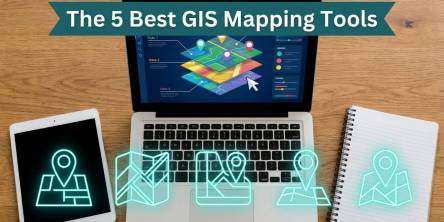Key Features to Look for When Choosing Asset Management Software

Managing a wide range of assets, from IT equipment to digital resources, can be overwhelming without the right tools. Businesses often struggle with asset mismanagement, leading to delays, unexpected costs, and compliance issues.
Selecting the right asset management software can help overcome these challenges. Equipped with the right features, it streamlines operations, improves oversight, and supports better decision-making, ensuring businesses remain efficient and competitive.
What is Asset Management Software?
Asset management software is a tool designed to help organizations track, manage, and optimize their assets throughout their lifecycle. This includes physical assets like equipment and vehicles, as well as digital assets such as software and licenses.
The software provides features for inventory tracking, maintenance scheduling, depreciation calculations, and reporting. By using asset management software, businesses can improve efficiency, reduce costs, and ensure better asset utilization and compliance.
The Growing Importance of Asset Management Software
Modern organizations face increasingly complex asset management challenges. While many still rely on asset management in Excel, with the rise of remote work, distributed teams, and hybrid infrastructures, the need for robust asset management solutions has never been greater.
The revenue of the asset management industry generated by alternative products worldwide is forecast to continue increasing until 2027, highlighting the growing demand for innovative asset management tools. Organizations that adopt comprehensive asset management software can streamline operations, enhance oversight, and improve asset utilization, allowing them to stay competitive and efficient.
Essential Features for Modern Asset Management
1. Comprehensive Asset Tracking and Management
The backbone of any workable asset management solution is built upon the base of tracking capabilities. While many businesses still rely on asset management in Excel, modern solutions provide the current monitoring of assets in order to track physical as well as digital assets with high accuracy. The enhanced inventory accuracies and streamlined management process involve automated asset tagging using QR codes and RFID systems.
All asset data can be accessed centrally, and therefore management time is noticeably reduced, allowing teams to shift their focus to high-level, strategic initiatives instead. Such tracking systems thus contribute to fewer manual errors and better asset utilization.
2. Seamless Integration Capabilities
Integration is essential for any asset management software to ensure it fits seamlessly within an organization's existing systems. Key features to consider include compatibility with enterprise systems like ERP and CRM for smooth data synchronization.
Robust API support allows for efficient data exchange between platforms, facilitating streamlined operations. Flexible deployment options, such as cloud-based or on-premise solutions, offer adaptability to different business needs and IT infrastructures, making integration capabilities a critical factor when choosing asset management software.
3. User-Friendly Interface and Customization
It should be easy to use for maximum benefits. An easily designable dashboard makes it easier for the user to understand and adopt the system, hence reducing its training time. Views and workflows are editable, thus allowing the team the functionality to fine-tune the interface based on their requirements, hence rendering the workflow productive.
Mobile accessibility further empowers teams by allowing them to manage assets on the go, ensuring that operations remain efficient and flexible. Solutions with a user-centric design foster higher adoption rates and smoother implementation.
4. Advanced Reporting and Analytics
Data-driven decision-making requires robust analytical capabilities:
● Customizable Reports: Generate insights with flexible reporting tools
● Predictive Analytics: Forecast maintenance needs and asset lifecycle events
● Visual Data Representation: Transform complex data into actionable insights
| Analytics Feature | Business Impact |
| Predictive Maintenance | 25% cost reduction |
| Real-time Reporting | 40% faster decisions |
| Visual Analytics | 35% better engagement |
| Data Integration | 20% efficiency gain |
5. Robust Security and Compliance
In an era where cyber threats are constantly evolving, robust security measures are crucial in asset management software. Features like end-to-end encryption ensure that sensitive asset data is protected both at rest and in transit.
Role-based access control allows for granular user permission management, ensuring that only authorized personnel can access specific data. Compliance management features help organizations meet industry standards such as the Sarbanes-Oxley Act, ISO, and GDPR, reinforcing trust and maintaining regulatory adherence.
6. Automated Maintenance and Alerts
Proactive maintenance management is a critical aspect of effective asset management. Automated maintenance scheduling helps organizations prevent unexpected asset downtime, improving overall operational efficiency.
Alerts for upcoming maintenance tasks and warranty expirations ensure timely servicing, reducing the likelihood of costly repairs. By implementing such automated solutions, businesses can optimize asset performance and extend their lifespan, contributing to better resource utilization.
7. Scalability and Flexibility
● Modular Architecture: Add features and expand capabilities as your needs grow.
● Multi-location Support: Manage assets across different geographical locations with centralized oversight.
● Resource Optimization: Scale resources based on actual usage for efficient management without extra costs.
8. Cost Management and Budgeting
Effective financial oversight is essential in asset management to keep expenses under control. Tools for total cost of ownership (TCO) tracking help organizations monitor asset expenses throughout their lifecycle.
Budget forecasting features to aid in planning future investments, ensuring that resources are allocated efficiently. Real-time cost analysis provides financial insights that facilitate informed decision-making and strategic asset allocation.
9. Support and Training Services
When selecting an asset management software provider, comprehensive support and training services are vital for successful implementation and long-term use. Look for providers that offer 24/7 technical support to assist with any issues that arise.
Comprehensive training resources and documentation make it easier for teams to learn and fully utilize the software’s capabilities. Regular updates ensure that the software stays current with the latest improvements and industry practices, maximizing the value of the investment.
Making the Right Choice
When evaluating asset management solutions, consider:
● Organization’s Needs: Match asset types and operational complexity.
● Scalability: Ensure future growth support.
● Integration: Compatible with ERP, CRM, and existing systems.
● Budget: Review upfront and ongoing costs; consider the total cost of ownership.
● Compliance: Verify adherence to industry standards (e.g., GDPR, ISO); look for audit trails and security features.
Choose a solution that fits current needs and supports future expansion for long-term efficiency and compliance.
Wrapping Up
Based on key features and capabilities, the best asset management solutions can be selected. Solutions prioritized should include rich tracking, seamless integration, user-friendly interfaces, and security measures.
The solution to be chosen needs to support the current requirements of an organization but support scalable growth in the future that way ensuring that the investment supports efficient operation in the present and will support it as the business expands.
Frequently Asked Questions
What features should I prioritize when selecting asset management software?
Track the following: Key tracking capabilities, existing systems integration, user interface, security, and scalability to ensure comprehensive asset management with long-term adaptability.
How can asset management software improve operational efficiency?
Asset management software primarily automates maintenance while streamlining asset tracking. It offers real-time data insights, which normally reduces manual work, prevents the potential for downtime, and improves decision-making.
How does asset management software help reduce costs?
Asset management software reduces costs by streamlining asset tracking, automating maintenance schedules, and optimizing asset utilization, which helps prevent asset loss, minimize downtime, and extend asset life cycles.
How to Evaluate ROI When Choosing Asset Management Software?
To evaluate ROI, calculate upfront and ongoing costs, estimate benefits such as efficiency gains and cost savings, and apply the ROI formula to compare different software options.
Similar Articles
Decentralized Finance (DeFi) has transformed how users earn passive income through blockchain-based financial systems. Among its most popular use cases,
Staying organized can feel like a full-time job. Between meetings, deadlines, and personal commitments, it’s easy to get overwhelmed.
Choosing the right GIS mapping software depends on what you need to accomplish. Some platforms cater to developers who want to build custom applications from scratch.
For data intensive industries such as insurance, the global business landscape is undergoing a profound transformation. Thanks to all the relentless technological innovation, this shift presents both significant challenges and unparalleled opportunities for modernization of the insurance sector.
Organizations are always looking for newer technologies to aid their operations. So, this hunt revolves around solutions that offer not only agility and scalability but are also cost-effective.
Not long ago, the idea of multiple AI agents working together, each with a specific role, collaborating to solve problems, felt like science fiction.
In today’s data-driven world, choosing the right business intelligence (BI) platform can make or break your organization's analytics success.
We all know that companies today are no longer limited to a single physical location. Work processes are also no longer strictly isolated.
It is neither secret nor news that the mind-boggling pace of digital transformation around us has totally altered consumer expectations.









